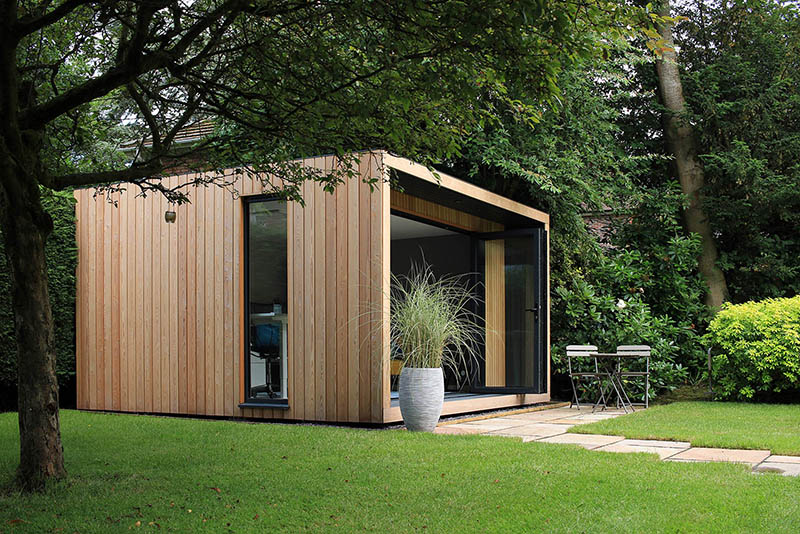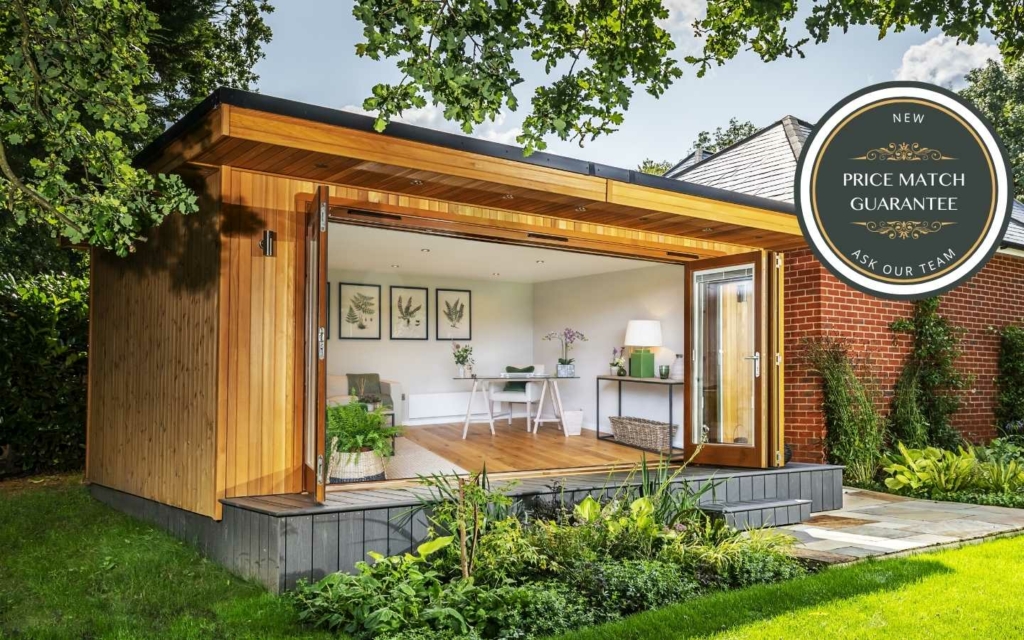New Suggestions On Planning Permission On Garden Offices
Wiki Article
What Planning Permissions Are Required To Build Garden Rooms, Etc. Within Conservation Areas
There are some restrictions that are in place when building conservatories gardens, outhouses, garden rooms or garden offices within conservation areas. These restrictions aim to protect the beauty and character of these areas. Planning permits are required in conservation zones. Here are a few important points to consider.
In conservation areas planning permits are required for any building or extension that falls under allowed development. This is the case for garden sheds as well as other outbuildings.
Dimension and scale:
Any structure of any size could require approval for planning if they are deemed to affect the nature of the conservation area. Limitations on size and scale apply to new buildings and extensions, compared with non-designated areas.
The Property Location:
Buildings and extensions that are situated to the side or front of the property are more likely to need planning permission. It could also be necessary to seek permission to build structures on the rear of the property if these are visible from the public space or have an impact on the nature of the neighborhood.
Materials and Design
Design and materials are important when it comes to conservation zones. It is important that any new construction, or extension, uses materials that match the historic or architectural importance of the area. In order to meet these requirements, you'll need planning permission.
Demolition:
To ensure that any changes made to the area aren't incompatible with its character, planning permission is required to demolish parts of existing structures, for instance outbuildings or boundary walls.
Height Restrictions
In conservation zones, the height limit is more stringent. If a building is greater than 2.5 metres, it is likely that planning permission will be required.
Effects on the Surroundings
If the proposed building or addition is likely to have significant effects on the appearance of the conservation area or the setting as well as views into and out of the area, planning permission is required.
Use of the Building
An outdoor space, outbuilding or studio may not need planning permission if the use is permitted.
Extensions and Alterations
Planning permission is required for all extensions that go beyond the volume or size limit, or alter the appearance of exteriors. This includes conservatories as well as other significant changes.
Curtilage Structures:
In a conservation zone or within the perimeter of a listed property need approval from the planning department. This includes expansions, new outbuildings or alterations.
Protected Trees:
In conservation areas, trees are often protected. The consent for tree works could be required if you plan a project that will affect trees.
Local Authority Guidelines
The local authority for planning may create specific guidelines or restrictions in each conservation zone. These guidelines can be adapted to fit the particular nature and character of each region.
In the end, to gain planning permission for conservation areas you need to consider the extent to which your proposed garden room or conservatory will impact the area's architectural and historic character. To ensure that your project meets all relevant laws, it is essential to speak with local authorities early in the planning process. Check out the top garden office for more info including garden room or extension, garden rooms brookmans park, garden buildings , how to get power to a garden room, garden room planning permission, Tring garden rooms, ground screws vs concrete, 4m x 4m garden room, composite garden rooms, outhouse and more.

What Is The Neighbourhood Planning Permission For Garden Rooms And So On.?
When deciding if permits are required for the construction of a garden office, conservatories or gardens as well as outhouses or outhouses in the vicinity, it's crucial to determine if neighbors are worried. Two important considerations: Overlooking and privacy:
If the proposed structure is likely to overshadow neighboring properties and result in the loss of privacy, planning permission is likely needed. This is to ensure that the new construction does not affect the living conditions of adjacent residents.
Loss and Overshadowing of Light
A planning permit is typically required if a proposed building could result in significant light loss or overshadowing to nearby homes. The local planning authority will assess the impact of daylight and sunlight to adjoining homes.
Disturbance and Noise
If the garden area or extension will be used for activities that create noise (such as a home office with guests workshops, for example, or a music room), planning permission is required. It will ensure that the noise level are acceptable and will not disturb the surrounding area.
Visual Impact and Character:
The design size, appearance and dimensions must match the character of its neighborhood. Planning permits ensure aesthetic appeal and ensures that the new development does not harm the aesthetics in the neighborhood.
Boundary Proximity
Planning permission may be required for buildings that are built close to the property's boundary, particularly if the structure is higher than 2,5 meters and within 2 meters. This is in order to avoid potential conflicts and the impact on neighboring properties.
Shared Access Rights of Way and Rights of Way
In order to avoid obstructing or negatively affecting shared access points, rights of way, or even constructions, planning approval is needed.
Rejections From Neighbors
Planning applications are discussed with residents of the area. Planning authorities will be taking into consideration the objections of neighbors when deciding whether or not to allow permission.
The impact on property values:
Although it's not always the primary aspect, any major changes to homes that can affect the value of their properties may be an important factor when determining the necessity of a permit. Local authorities will take into account these effects when making a decision.
Covenants and Deed Restrictions:
If you have a covenant or deed restriction for your property, it could require that you comply with them regardless of whether planning permission is granted. These agreements could affect neighborhood harmony by dictating what can be built and what is not.
Construction Disturbance:
The planning permission can be granted in order to resolve concerns over disruptions that may occur during construction, such as dust, traffic and noise. The construction may have conditions on the construction project to reduce the impact it has on neighbors.
Infrastructure Impact:
If the new structure places additional strain on local infrastructure (e.g. drainage, parking, road usage) the planning permit ensures that these effects are evaluated and appropriately managed.
Community Consultation
In certain situations, it may be necessary to seek out a larger community in particular when dealing with large or controversial projects. This enables a more democratic decision-making process, taking into account the views of the community.
Summary: Concerns over the neighborhood's surrounding are a major factor in deciding if it is appropriate to approve planning permission for garden offices, conservatories, outhouses or garden extensions. The development proposed must not adversely impact the living conditions of neighbors, their privacy, the quality of light and sound and the overall appearance. Contact the local planning authority early on in the process to address these concerns. Read the most popular contemporary garden room extensions for blog tips including insulated garden buildings, garden out house, garden rooms, garden rooms brookmans park, outhouse building, what size garden room without planning permission, garden rooms, ground screws vs concrete base, outhouse builders, out house for garden and more.

Restrictions On Location: What Permits Are You Required To Obtain For Garden Rooms And Other Structures?
If you're planning to construct the garden room, conservatory outhouse, extension, or garden office the restrictions for location will determine if planning permission is necessary. These are the most important factors to be considered when determining the location proximity to boundaries:
Within 2 meters of the property boundary, any building must not be higher than 2.5 meters. If the building's height exceeds these limits, a planning permit is needed.
Front of the Property:
Planning permission is typically required for structures constructed in front of the house's main elevation (the side facing the front) because the permitted development rights do not allow for extensions that go forward.
Side of the Property:
Side extensions need to comply with certain height and size restrictions and often require planning permission if they exceed the existing wall of the sidewall.
The rear of the property:
There are size and height restrictions on rear extension extensions. The planning permission must be obtained if these extensions are in excess of the permissible growth boundaries.
Designated Zones
In National Parks (National Parks), AREAS OF OUTSTANDING NATURAL Beauty(AONB) and World Heritage Sites (World Heritage Sites) more stringent control is in place. Any new construction regardless of its size may require planning permission.
Listed Buildings
The property that is classified as a building is subject to strict rules. Planning permission is typically required for any new construction, modification, or extension, no matter the location of the property.
Green Belt Land:
The construction of green belts is strictly prohibited to protect open space. A special permit is typically needed for any new construction or changes.
Zones at risk of flooding
Additional regulations can be imposed if the property in question is located within a zone that is prone to flooding. These are designed to stop the building of a building from increasing flood risk. Planning permission, and perhaps an assessment of the risk of flooding could be required.
Urban vs. Rural settings
Urban and rural settings are usually governed in different ways. Rural homes may be more accommodating to the size and position of outbuildings. But this could be different.
Highways and Public Rights of Way:
If the building is located near highways, roads or public right-of-ways plans approval might be required in order to prevent the structure from hindering views, safety or access.
Shared ownership or leasehold:
If you have a property that is leasehold or part of in a shared ownership plan, it may be necessary to obtain additional approval from the owner or managing entity. It is also possible to require permission to plan your property based on the local laws.
Nearby to Other Structures
Planning permission is required if the proposed structure is built next to an existing structure or structure, particularly ones located within the same property. This is to ensure there are no adverse effects on nearby buildings or land.
Consult your local planning authority for guidance that is specific to the location and circumstances of your home. Regulations may differ significantly depending on local laws, and ensuring the compliance of all applicable restrictions is essential to avoid legal problems and penalties. Have a look at the best build outhouse in garden for website recommendations including garden room, out house for garden, outhouses for garden, garden room permitted development, garden room planning permission, what size garden room without planning permission uk, Tring garden rooms, costco outbuildings, garden buildings , garden rooms and more.
